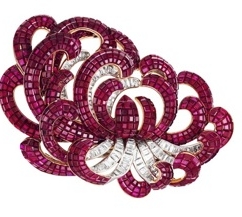Articles and News
WORKING WITH A FREELANCE DESIGNER? BEWARE WHO REALLY OWNS THE PIECES! | October 10, 2012 (0 comments)

Paris, France—In what was hailed as a victory for luxury brands around the world, a Paris court recently ruled that a designer does not own individual rights to the designs he or she creates for an employer.
In the United States, this already is the law. But the same law does not apply to freelance designers who are contracted to produce a line—a common work situation in the jewelry industry, both among manufacturers and upscale retailers.
This article in Women’s Wear Daily says the Paris Court of Appeals ruled that the designs made by an employee of the legendary jewelry house Van Cleef & Arpels should be considered a simple contribution to the collective works of the company, rather than the intellectual property of the designer. The plaintiff, Thierry Berthelot, not only was defeated, he also was fined damages of 10,000 euros (about $12,500) for “maliciously” withholding his designs from the company for seven years while the legal battle raged.
On a grander scale, says the article, the ruling also means that even celebrity designers such as Tom Ford’s designs for Gucci are the property of Gucci, not Ford, and should Karl Lagerfeld ever leave Chanel, his designs for the house stay with Chanel.
Under U.S. law, intellectual property (designs, patents, articles, etc.) created by an in-house (W-2) employee of a company are the property of the employer, says attorney Peter Berger of Levisohn, Berger LLC, a New York-based law firm specializing in intellectual property law. It is considered work-for-hire and there is no need for written assignment of the designs.
But designs created by a designer who is a 1099 contractor—not a W-2 employee—do not automatically belong to the client company, Berger told The Centurion.
Although it is common practice in the jewelry industry for outside designers to consider the work they do for a client as assigned (i.e. belonging to) the client—and occasionally some courts have agreed—legally the work does not automatically belong to the client unless it has been assigned in writing. If there is a dispute, it’s just as likely a court could rule in favor of the designer.
Bottom line? If you’re working with a freelancer, get ownership in writing. Berger always cautions clients to have written assignments for works created by contractors, because while disputes over design ownership have been relatively rare in the industry, when they do arise it’s both expensive and time-consuming.
Separately, the jewels of Van Cleef & Arpels are the subject of a new show at the Decorative Arts Museum in Paris. “Van Cleef & Arpels — The Art of Fine Jewelry” runs through February 10 and features close to 500 pieces of jewelry, watches, and objets, one-third of which are privately owned and previously unseen.
Top photo: WWD







